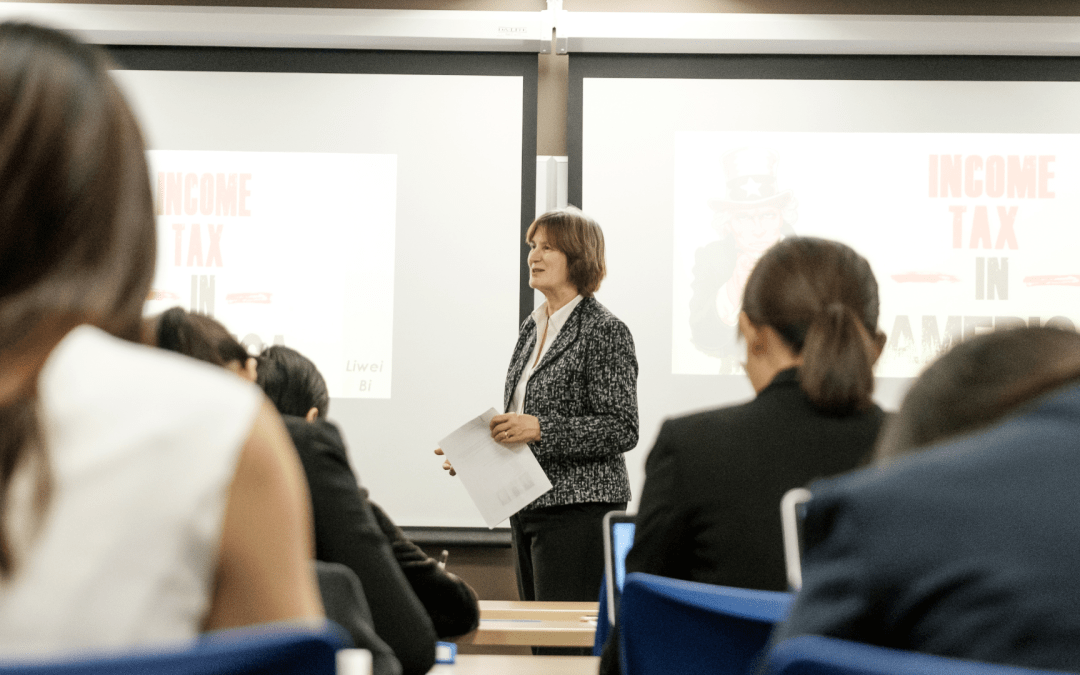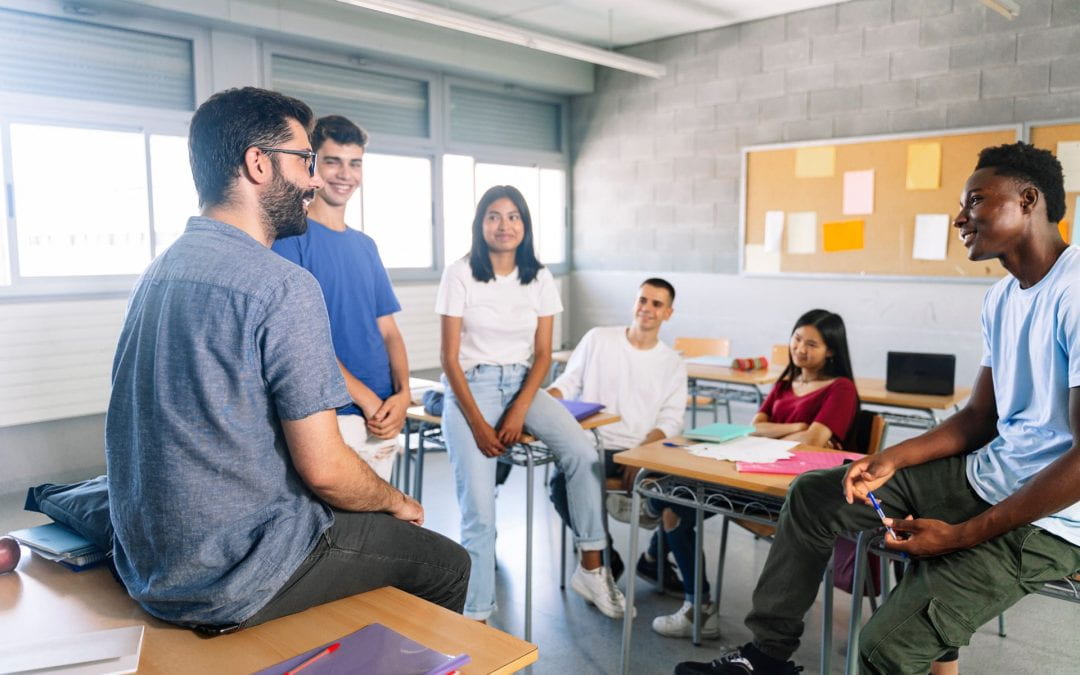Second Annual SJSU Research Week to Celebrate and Highlight Public-Impact Research
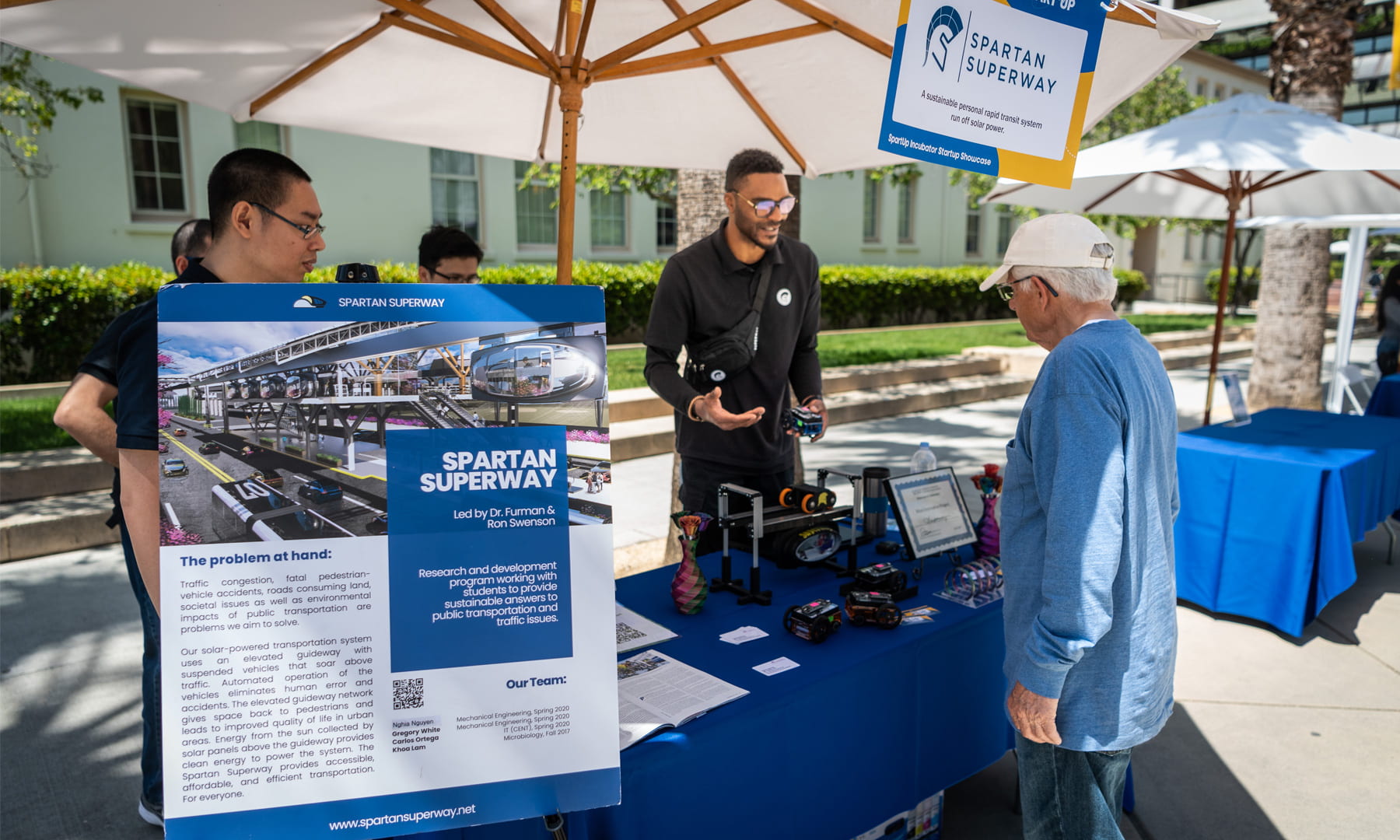
Students at last year’s SpartUp Innovation Showcase showed off their Spartan Superway project as part of Research Week 2023. Photo by Robert C. Bain.
San José State University’s second annual Research Week aims to explore research, scholarship and creative activity (RCSA) across campus and disciplines. Join us to meet scholars, inventors, researchers, authors and artists: a true cross-section of the many dynamic creators in the university community.
Spanning 12 events from April 15-20, SJSU Research Week will showcase 250+ student and faculty academic investigators, celebrated authors and groundbreaking researchers. Events will include the SJSU SpartUp innovation showcase, a guided art tour, the Grad Slam, a discussion of the future of AI with President Cynthia Teniente-Matson and Representatives Zoe Lofgren and Anna Eshoo. It all culminates with the showcase Celebration of Research event on April 18, where the SJSU Research Foundation will feature student researchers and honor faculty awardees.
“SJSU Research Week is a week of pride and celebration for the entire SJSU campus community,” says Mohamed Abousalem, vice president for research and innovation. “This year’s event lineup demonstrates SJSU’s leadership in many established and evolving public-impact research and innovation fields through faculty-led, student-engaged scholarship. We look forward to sharing our strengths and achievements with all our communities.”
Ranked first in the nation in research among all non-PhD-granting universities, SJSU offers hands-on learning for one of the most diverse student bodies in the nation. For many universities, research opportunities are generally offered to graduate and postdoctoral students. SJSU also provides undergraduates with hands-on research experience, ensuring experiential learning opportunities to students as early as their first year on campus.
At the Celebration of Research event, the SJSU Research Foundation will feature student researchers and honor faculty awardees, including Hilary Hurst, assistant professor of physics and Melissa Beresford, assistant professor of anthropology, who will each receive 2023 Early Career Investigator Awards, and Hiu-Yung Wong, associate professor of electrical engineering, will receive the inaugural 2023 Industry-Sponsored Research Award.
All three awardees spoke with us about their research and what the award means to them; read more about their research journeys below.
Check out one or all of the Research Week events:
April 15 — Innovation Showcase
Innovation and prototype demos with student startups and faculty inventors, among others.
April 15 — Guided Art Tour with Alena Sauzade
Learn more about the amazing creative work of the SJSU community on a guided art tour with Art Gallery Director and Collections Manager Alena Sauzade.
April 15 — Engineering Showcase and Celebration
Join the Charles W. Davidson College of Engineering to celebrate student innovation, research and design. At the showcase, find student presentations on their projects, network with the next generation of engineers and other Silicon Valley professionals, and learn how industry support can lead to extraordinary possibilities.
April 16 — Student RSCA Forum with HonorsX
Come listen to the HonorsX students present their research work, followed by a panel-style Q&A.
April 16 — Grad Slam
Hosted by the College of Graduate Studies, the SJSU Grad Slam, a three-minute thesis competition, is an exciting and fast-paced event where graduate students present their research with one slide.
April 17 — College of Social Sciences Student Research Symposium
Explore captivating student research projects in the College of Social Sciences. Students will present research representing diverse disciplines, varying research methods and interdisciplinary collaboration.
April 17 — SJSU Author & Artist Celebration with Special Recognition for Inventors
A celebration to honor faculty and staff who have published a book, exhibited a significant work of art or submitted a patent application in 2023, hosted by the Dr. Martin Luther King, Jr. Library.
April 18 — Celebration of Research
The Early Career Investigator Award winners and Industry-Sponsored Research Award winner will be honored, and students will present over 80 posters characterizing inspiring and groundbreaking work.
April 18 — Earth Day Resource Fair
For Earth Day 2024, the Environmental Resource Center (ERC) at San José State is turning up the heat on plastic pollution with the theme “Planet vs. Plastics!”
April 19 — The Artificial Intelligence Futures Forum
President Teniente-Matson will lead the conversation about SJSU’s research, teaching, and operational activity in Artificial Intelligence (AI) and moderate a discussion on the future of AI and the federal government’s role in guiding its development with two leading voices in Congress, U.S. Representatives Zoe Lofgren and Anna Eshoo.
April 19 — 19th Annual College of Science Student Research Day
Many undergraduate and graduate students are engaged in original research projects on a wide range of scientific topics. Approximately 100 of their research posters will be displayed at this event, with the student authors present to explain their results.
April 20 — San José City Hall Rotunda Concert and Sound Projection
A live performance of music for a mixed ensemble and electronics, the concert will place site-specific spatial acoustics and performer/audience distribution at the foundation of the creative compositional process.
View more details on Research Week events.
Hilary Hurst: “Physics is never fully solved”
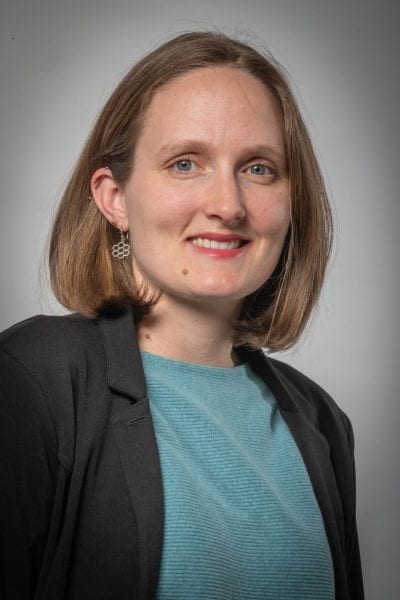
Hilary Hurst, assistant professor of physics.
Hilary Hurst, assistant professor of physics, is one of two awardees of the 2023 Early Career Investigator Award. Below she describes her physics mentors and discusses how quantum systems are like soccer balls.
How would you describe your research?
Hilary Hurst (HH): Imagine you had a soccer ball, but every time you looked at it, the arrangement of black and white polygons on the surface changed its orientation, or its color. That would be pretty strange, right? And yet that is what happens to quantum systems when we measure them. Our mere observation of the system causes it to “collapse” — to fundamentally change its character. Collapse is usually an impediment to practical, scalable quantum technologies. My research in theoretical quantum information science is all about new ways of measuring quantum systems to avoid collapse and make them more robust (and hopefully more useful).
What has your research accomplished thus far, and what do you hope to see it accomplish in the future?
HH: We’ve shown that, in principle, it is possible to both measure quantum systems in real time, using a technique called weak measurement, and apply some feedback control to drive the system toward a desirable state. Neither of these ideas are straightforward for quantum systems because of the measurement limitations I mentioned above, but it could be a real advantage in engineering new quantum systems, as opposed to just measuring the quantum properties as given to us by nature.
In the future, I hope to be able to apply these concepts to larger systems where we can purposefully grow entanglement through this process of quantum state engineering via measurement and feedback. Entanglement is a key property of quantum systems which essentially says that the whole is more than the sum of its parts — it allows quantum information to be stored in spatially separated systems that are nevertheless related to each other (even over vast distances) — because they are entangled. Entanglement makes quantum systems very special, but it’s also fragile. I want to apply the ideas I’ve developed toward creating more robust entanglement. Additionally, I hope to work with my collaborators to observe some of this physics in experiments using systems of ultracold atoms.
What person, experience, or event influenced your interest in this field? How so?
HH: I’ve been fortunate to have many great physics mentors throughout my career. Arguably, my first physics mentor was my dad — although he went on to become a medical doctor, his undergraduate degree was in physics. Growing up, he was always pointing out the ways that physics impacts our lives, from the appliances we have to the way a rainbow forms after a storm. Another key mentor was my undergraduate senior capstone project mentor Dr. Lusk at the Colorado School of Mines.
Dr. Lusk gave me my first opportunity to conduct research in the area of theoretical quantum physics. My experience in his group taught me a lot about how to stay curious and humble in research. Physics is never fully “solved,” and there are always new questions to ask if you look for them. Many of my professors at my undergraduate institution encouraged me to continue on to graduate study in physics, and I am very grateful to them for their support. I hope that I can provide the same inspiration and encouragement to students here at SJSU.
Can you describe how SJSU students are engaged in this research? How have students benefited from their participation? And how has your research benefited from their involvement?
HH: SJSU students (both graduate and undergraduate) have been involved in my research since I started here in fall 2020. They have greatly enhanced my experience as a researcher by bringing new ideas and fresh perspectives. For example, I had a great undergraduate student working with me for a few years who was an applied mathematician. Together, we learned a lot about how to make my numerical simulations run more efficiently, and his training in mathematics brought a very different perspective.
I always hope to give students the opportunity to learn some quantum physics, of course, but also to learn transferable skills that they can take with them no matter what career they pursue — things like scientific communication, programming skills, and how to build intuition about complicated processes by breaking them down into simpler toy models. I’ve also benefited from working with students to develop new teaching tools for my courses in quantum information science — they can help develop materials to introduce complicated topics like quantum measurement and quantum computing to laypeople.
Melissa Beresford on the Politics of Water Insecurity
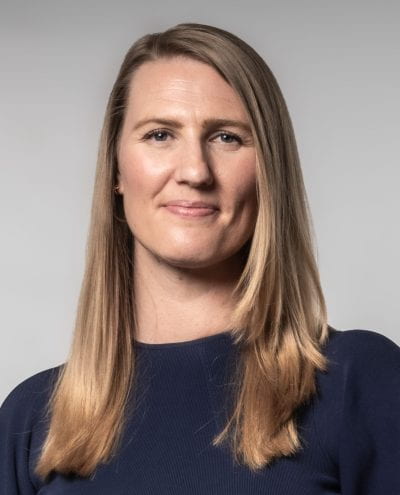
Melissa Beresford, assistant professor of anthropology.
Melissa Beresford, assistant professor of anthropology, is the second recipient of the 2023 Early Career Investigator Award. She spoke with us about water insecurity, informal networks for water sharing and the personal experiences she brings to her research.
How would you describe your research?
Melissa Beresford (MB): My research investigates how people use informal and hidden economic arrangements to cope with water insecurity — things like sharing jugs of water with neighbors, pooling labor and resources to build self-made community water systems, or buying water under the table from informal water vendors. My goal is to understand when and how these hidden economic arrangements can protect people from the most severe effects of water insecurity versus when they might actually exacerbate the problems of having inadequate water (like taking up more time, being more expensive, or triggering stress and anxiety).
I do my work as part of large interdisciplinary research teams, with scholars and partners all over the world. One of the things that my colleagues and I are trying to figure out is how these types of hidden and norm-based economic arrangements (what we call social infrastructures) can be integrated with new types of engineered water infrastructures to get people the water they need and alleviate the burdens of water insecurity. We call this integrated approach to researching social and engineered water infrastructures MAD (modular, adaptive, decentralized) water.
What has your research accomplished thus far, and what do you hope to see it accomplish in the future?
MB: One of the major things that my colleagues and I have found is that hidden informal arrangements (like sharing bottles and jugs of water, or running hoses between households) are one of the primary ways that households around the world cope with water insecurity. But these social arrangements often create a lot of additional burdens for people. For example, my colleagues and I conducted a study across 20 water-insecure sites around the world and found that water-insecure households that loaned or borrowed water with other households experienced significantly higher levels of anger, stress, and conflict compared to water-insecure households that did not loan or borrow water.
This is a really interesting puzzle because 100+ years of anthropological research shows us that social infrastructures for other resources (like food) typically alleviate stress and actually promote social cohesion and social solidarity. So there must be something going on that’s causing these negative outcomes around water specifically. This puzzle drives a lot of my research: what makes an informal exchange system alleviate the effects of water insecurity versus provoke or exacerbate them. And this has really important implications: if we know that social infrastructures are a key way that households will adapt to water insecurity, and we know that water insecurity is only going to increase in coming years due to the climate crisis, then it’s really bad news that they are causing significant amounts of distress for people. We need to figure out what is going on.
In my first year as an assistant professor at SJSU, I came up with a hunch that I thought might explain this puzzle: I thought that perhaps social infrastructures with strong, socially understood norms might be much better at supporting people than those where norms are weak or absent, or where people don’t know or are not accountable to one another. In 2022, I received a National Science Foundation CAREER grant to investigate this theory for the next five years.
To do this, I am conducting research with households in unincorporated areas of Santa Clara County who have no public water access and regularly experience water insecurity. Many of the households in these areas have lived there for generations, and have developed deep cultural knowledge and strong norms about how to cope with the unpredictability of water availability in the area.
I am collecting data on the norms that guide informal water exchanges there to learn how they work, and the outcomes of these experiences. But I am also collecting data in other communities in California and the western U.S. where water insecurity has been a more recent problem, or where there has been more migration in and out of communities.
I am also leading a global team of researchers to collect similar data in water-insecure communities around the world, so we examine the norms around social infrastructures for water cross-culturally. If we know what makes social infrastructures more successful and resilient, we can make better recommendations for how to support and cultivate them, and even how to successfully integrate them with new engineered water technologies so that these technologies have more successful uptake in water insecure communities.
What person, experience, or event influenced your interest in this field? How so?
MB: In high school I took AP Environmental Science and became passionate about doing something to address the climate crisis. I went to college wanting to become an environmental lawyer so that I could help design new laws, policies, and programs to protect people from the impacts of climate change. But then I stumbled upon environmental social science through my general education requirements. I later became fascinated with anthropological research that showed how human cultural norms and social arrangements have helped people adapt to a wide range of environmental conditions throughout human history. This made me recognize the importance of these social arrangements in my own life.
I grew up on the California central coast in an unincorporated area with no public water access. My family shared a well with our neighbors and everyone met monthly to discuss how to manage the water, who was going to pay for system maintenance and upgrades, how much water each house was allowed to use, and so on.
In reflecting on these experiences, I realized that although laws and policies are important (and we should always be striving for better ones), the relationships in our own communities are the most immediate ways we can adapt to our environments and protect ourselves from things like drought, disasters, or other types of crises.
For example, if my well breaks or runs dry, I can turn to my neighbor, or my family, or my friends for water — as long as I have cultivated those relationships! That is why it is so important to cultivate and maintain our communities and social relationships. These relationships provide a social safety net that is immediate, flexible, and adaptable — quite unlike most state-run programs. Water insecurity is one of the biggest challenges that we will face in the coming years, and I firmly believe that adapting to it will require us to rely on one another more than ever.
Can you describe how SJSU students are engaged in this research? How have students benefited from their participation? And how has your research benefited from their involvement?
MB: At SJSU, I direct the Culture, Economy, and Environment (CEE) training lab which integrates 10-20 undergraduate and graduate students each semester into my projects with the help of a SJSU graduate student lab manager. We provide structured training on how to collect and analyze social science data, and send the students out to collect, manage and analyze real social science data that contributes to the research theme I am working on that year.
The goal of this program, however, is not only to provide students hands-on research training; I also hope to cultivate a diverse, collaborative research team in which students learn how and feel empowered to contribute their own knowledge and perspectives to these research projects. For example, many of my students have experienced water insecurity themselves, or have friends or relatives who have. Their knowledge and insights of those experiences really help to collectively guide our work.
Students benefit from this experience by learning tangible research and team science skills. I benefit from having a broad range of diverse perspectives that are contributing to this research agenda. I firmly believe that the problems our world faces today can only be solved through the collaboration of many different experts from many different fields and perspectives. But in the U.S., we still tend to teach students in very individualistic ways. As someone who is dedicated to training the next generation of scholars, my goal is to teach students first and foremost how team-based research is done.
Hiu-Yung Wong on Cryogenic Semiconductors
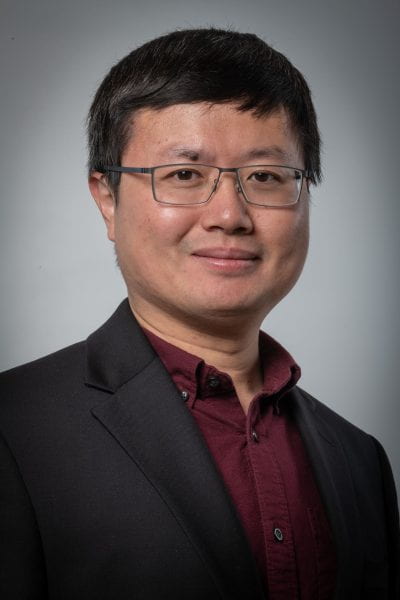
Hiu-Yung Wong, associate professor of electrical engineering.
Hiu-Yung Wong, associate professor of electrical engineering, will receive the 2023 Industry-Sponsored Research Award in recognition of his work with cryogenic semiconductors, which help power quantum computers, space exploration and more.
How would you describe your research?
HW (Hiu-Yung Wong): I work to measure, model, and study the low-temperature (cryogenic) properties of semiconductor transistors down to 4.2 degrees Kelvin (only 4.2 degrees above absolute zero). This is because cryogenic semiconductors are important in quantum computers, space exploration, scientific instruments and high-performance servers.
What has your research accomplished thus far, and what do you hope to see it accomplish in the future?
HW: We have measured quantum-engineered transistors, 65nm transistors and 14nm FinFET (3D transistors) and developed the corresponding empirical models. We will further develop TCAD models which can be used in commercial simulators to assist the design of cryogenic semiconductors.
What person, experience, or event influenced your interest in this field? How so?
HW: The emergence of quantum computers aroused my interest in cryogenic semiconductors. Most quantum computers operate at ultra-low temperatures. To develop a highly-scaled quantum computer using cryogenic semiconductor chips to control its operations is one of the most feasible solutions.
Can you please describe how SJSU students are engaged in this research? How have students benefited from their participation? And how has your research benefited from their involvement?
HW: I am fortunate to have both undergraduate and graduate students to work on the research project. They are trained to perform measurements, programming for automatic data analysis and TCAD simulations. My students are hard-working, fast learners. They are persistent under uncertainties and very eager to learn new skills and knowledge. We have published one conference paper and we expect to have another two journal papers published in the future. Specifically, one undergraduate student found his first job because of the measurement skills he learned in this project.

